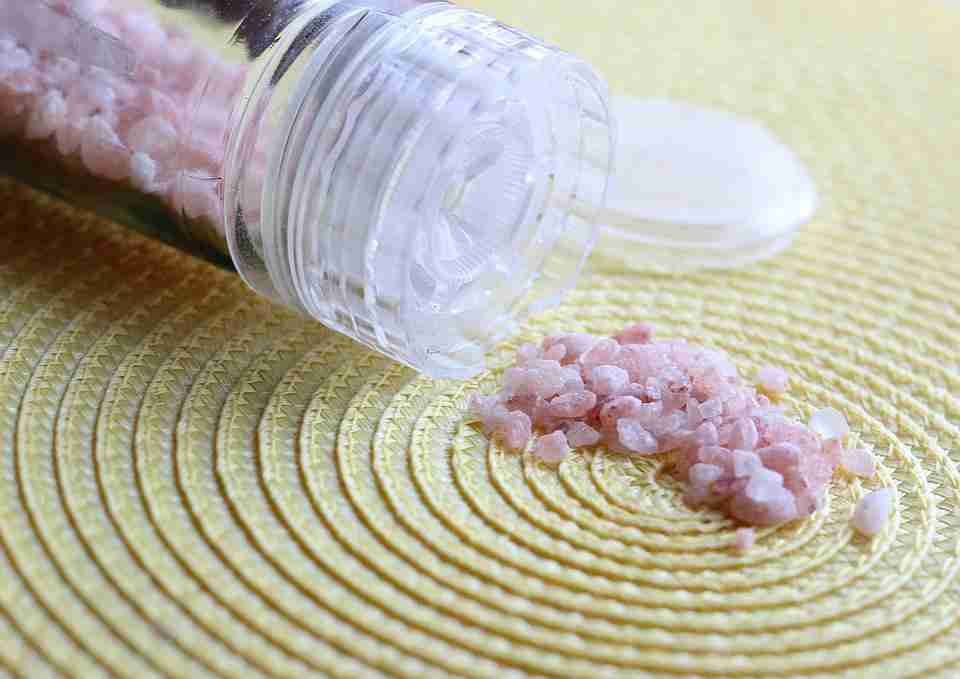
MUSCLE STRAIN. CAUSES OF MUSCLE FEVER

8 min read
Muscle fever, also known as delayed onset muscle soreness (DOMS), is the pain and discomfort experienced 24 to 72 hours after strenuous exercise. While previously attributed to lactic acid buildup, recent research suggests it is caused by micro-tears in muscle tissue resulting from intense physical activity.
This article explores the causes of muscle fever and how it can be managed effectively.
Understanding Muscle Fever
Muscle fever is the specific pain or discomfort that remains from 24 to 76 hours after intense exercise of a certain muscle or muscle group. It was once thought that muscle soreness was due to the synthesis of lactic acid itself (which creates this irritation in the muscles due to its acidic nature), but the most recent theories have shown that it is due to tiny micro-tears in the muscle tissue caused by uneven or an unusual load (such as fitness training), plus the very irritation of this same lactic acid (because of the acidic nature of the acid, as I have already specified).
The reason for dropping the theory of the formation of lactic acid itself (as a separate process) is that since the lactic acid dissipates relatively quickly in the body, it cannot explain the pain that remains the next day. The lactic acid itself “irritates” the microtraumas caused by the fitness training and this gives the appearance of muscle fever!

Even if the lactic acid is completely dissipated, a similar pain remains until the minute microtears along the muscle fiber are fully healed.
Exercises requiring a lot of uneven loading (such as hill running, step machine, etc.) would lead to the most severe forms of muscle spasm, as such loading would cause greater damage to muscle tissue than standard uniform loading (e.g., climbing the same slope or general movements imitating the load of everyday life itself). Another study claims that muscle fever is not caused by pain in damaged muscle tissue but is due to a strengthening process. The muscle responds to training by strengthening itself to a degree higher than before by building new segments in the muscle tissue. This strengthening process causes the cells to grow and exert pressure on the surrounding nerves and arteries, causing muscle fever. But this remains a hypothesis to date. Despite logic.
The Role of Lactic Acid
Lactic acid, produced during strenuous exercise, contributes to the irritation associated with muscle fever. It is a byproduct of anaerobic metabolism and can lead to the temporary acidic environment in the muscles. While lactic acid dissipates relatively quickly, its presence exacerbates the micro-tears in muscle tissue, prolonging the sensation of muscle soreness.
Lactic acid (IUPAC systematic name: 2-hydroxypropanoic acid), which causes the irritation called muscle fever, is a chemical compound that is involved in several biochemical processes. It is a carboxylic acid with the empirical formula C3H6O3. Lactic acid has one hydroxyl group adjacent to the carboxylic acid, making it an alpha-hydroxy acid. In solution, it can lose a proton from the acid group and form the lactate ion CH3CH(OH)COO-.
Lactic acid is chiral and has two optical isomers. One is known as L-(+)-lactic acid or (S)-lactic acid, and the other, its mirror image, is D-(-)-lactic acid or (R)-lactic acid. The biologically important isomer is L-(+)-lactic acid.
L-lactate is produced from pyruvate by the enzyme lactate dehydrogenase (LDH) in a fermentation process. Lactate is produced naturally in the process of normal metabolism and physical activity, but does not increase in concentration until the rate of lactate production exceeds the rate of its destruction. The rate of destruction depends on several factors, including monocarboxylate transporters, the concentration and isoform of LDH, and the oxidative capacity of tissues. Blood lactate concentration is usually 1-2 mmol/L at rest but can rise to 20 mmol/L during intense exercise.
Increases in lactate concentration usually occur under conditions where the energy required by the tissues cannot be produced by aerobic respiration, i.e., tissues cannot process oxygen and substrates fast enough. Under such conditions, pyruvate dehydrogenase cannot convert pyruvate to acetyl-coenzyme A fast enough and pyruvate begins to accumulate. This would in principle inhibit glycolysis and reduce ATP production if LDH did not reduce pyruvate by converting it to lactate. The purpose of lactate production is to regenerate nicotinamide adenine nucleotide (NAD+) required for glycolysis and thereby allow adenosine triphosphate (ATF) production to continue.
Accumulated lactate can be destroyed in several ways:
- oxidation to pyruvate by well-oxygenated muscle cells, which is then used directly to power the Krebs cycle
- conversion to glucose by the Cori cycle in the liver through the process of gluconeogenesis
Lactic acid fermentation is also carried out by Lactobacillus bacteria. They can act in the mouth. The acid they produce is one of the causes of tooth decay called tooth decay. The measures to be taken when muscle fever occurs are:
- A fruitful rest
- Complete high-protein and medium-high carbohydrate food
- Correct dosage of the training volume, in every fitness training
- Massage
- Stretching
Causes of Muscle Fever
One of the primary causes of muscle fever is the performance of exercises that apply uneven or intense loads on the muscle tissue. Activities like hill running and high-intensity interval training can lead to greater damage to the muscles, resulting in more severe muscle soreness. Additionally, the process of muscle strengthening and tissue repair following intense exercise can contribute to the sensation of muscle fever.
Causes of Muscle Fever
| Causes | Impact |
|---|---|
| Performance of exercises with uneven or intense loads | Results in micro-tears in muscle tissue and increased muscle soreness |
| Overworking muscles without adequate rest and recovery | Leads to greater damage and delayed healing of muscle tissue |
| Poor nutrition, dehydration, and inadequate hydration | Negatively impacts muscle recovery and repair processes |
| Lack of proper warm-up and cool-down routines | Increases the risk of muscle strain and enhances the severity of muscle soreness |
| Insufficient stretching and mobility exercises | Contributes to muscle stiffness and restricts blood flow, delaying recovery |
| Lack of variety in training routines and overemphasis on specific muscle groups | Increases the likelihood of muscle imbalances and overuse injuries |
| Ignoring warning signs of fatigue and pushing through intense workouts | Exacerbates muscle strain and can lead to long-lasting muscle soreness |
| Inadequate sleep and recovery time | Impairs the body’s ability to repair and rebuild muscle tissue, prolonging muscle fever |
| Not using proper form and technique during exercises | Increases the risk of injury, further complicating muscle soreness |
| Skipping cooldown exercises and post-workout stretching |

Before we talk about fading, let’s say why we should look for muscle fever every time after training: it’s a must if you really want to emphasize muscles and sculpt a body. Remember: training sculpts muscle. It treats him as he gets micro tears, and nutrition then repairs and builds. Without muscle fever, you won’t have toned muscles.
WHEN SHOULD MUSCLE FEVER END?
Almost everyone, including non-athletes, has had a strong and acute muscle fever at least once in their life! Athletes and those who practice strength sports, including, know even better the pain caused by muscle soreness. Regardless of the bad yet nuance of muscle fever (irritating, all-day and sharp pain), you must, especially if you want to lose weight or gain lean muscle mass, look for the effect of muscle fever. But why? It’s simple - a fitness workout leads to muscle strain. The more serious (get it right) you train, you are always training the muscles themselves.
We also add the correctly selected (for both men and women) working weight and things work out - you have a properly conducted muscle work. Fitness work. Which leads to a shaped muscle, improved metabolism in the muscle, etc. Large muscle groups such as thighs and back (add pectoral muscles here) often have muscle soreness lasting up to 2-3 days. And the small muscles, such as shoulders, armpits, stomach, and calves - up to 1 day. Of course, everything is strictly individual, but this is the unwritten rule.
The most important meals of the day and your diet are pre-workout and post-workout. According to your goal - losing muscle mass or simply for health, these two meals of the day have a different ratio and presence of the three food macronutrients - protein, fat, and carbohydrates. If something here is lame - do not expect a smooth and correct elimination of muscle fever.
Apart from these two meals, one also properly recovers from the fitness program itself. As I wrote above, the right braid for you is a guarantee that you will recover well. And you will have progress. A third way to recover and even eliminate muscle fever faster is the use of nutritional supplements with a restorative effect. The fourth way is the massage. Anything but anti-cellulite will do!
Strategies for Managing Muscle Fever
Several strategies can help manage and alleviate muscle fever:
- Ensure adequate rest between intense workout sessions.
- Consume a balanced diet rich in protein and carbohydrates to support muscle recovery.
- Gradually increase training intensity to allow the muscles to adapt and minimize the risk of excessive soreness.
- Incorporate stretching and massage techniques to promote muscle relaxation and recovery.
Conclusion
Muscle fever is a common phenomenon experienced by individuals engaging in intense physical activity.
Proper rest, nutrition, and training practices play a crucial role in minimizing the impact of muscle soreness and enhancing overall physical performance.


